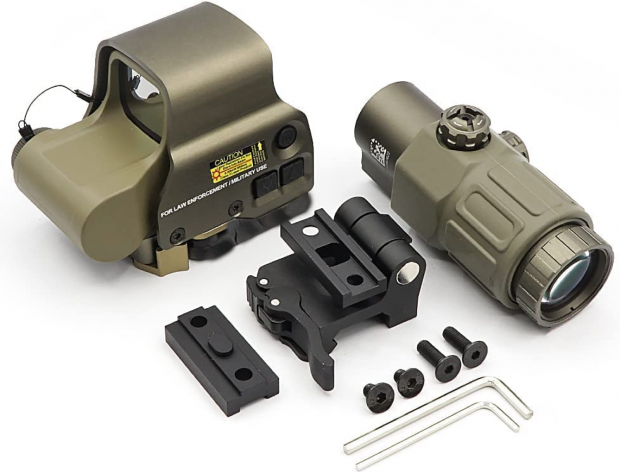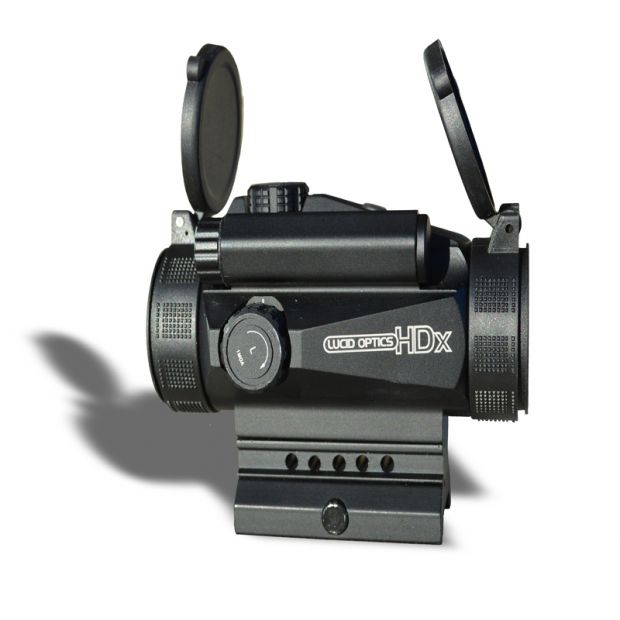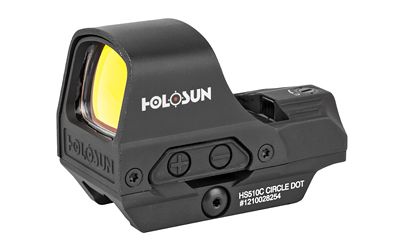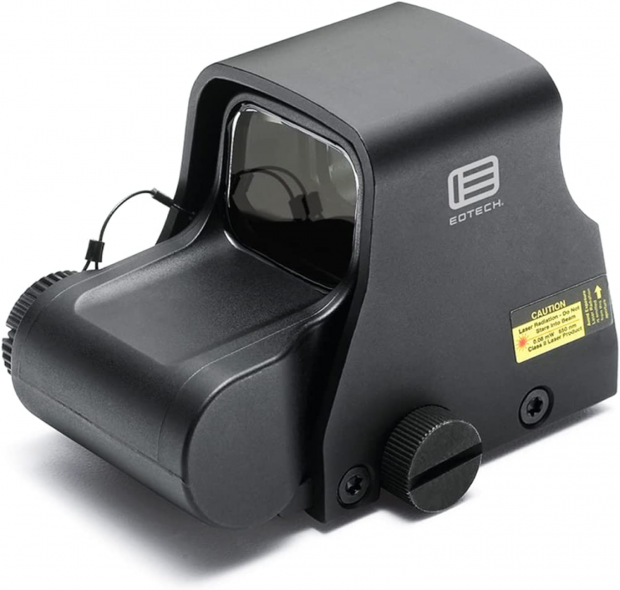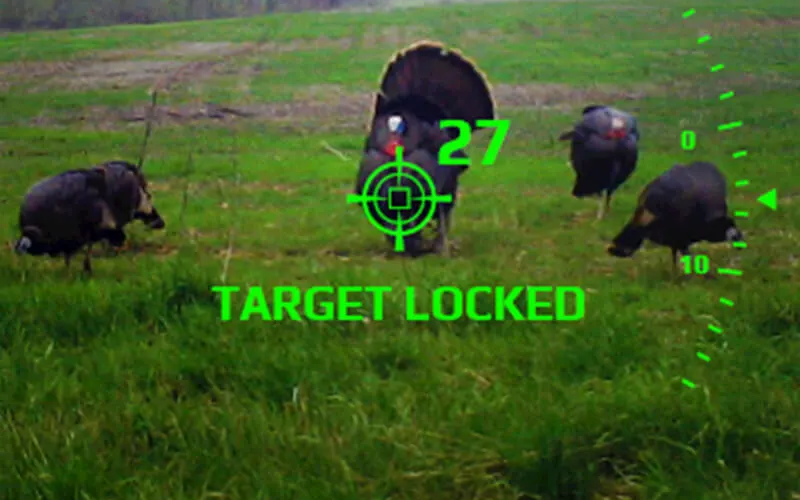Table of Contents
Reflex Sight vs. Red Dot Sight
Many types of optic options are available when you take your gun out to the range or go hunting for that nice 8-point buck. Should you go with a fancy scope? What about old-fashioned iron sights because you like a challenge? Maybe you should grab a red dot sight or a reflex sight – what’s the difference, anyway? We’ll break down the difference between red dot sights vs. reflex sights and how the terminology can get confusing.
Red dot sights are the overall category that reflex sights fall into. All reflex sights are red dot sights, but not all red dot sights are reflex sights. It’s that simple…. or is it?
Red Dot Sights
Red dot sights cover a wide variety of sights. Red dot sights are more broadly defined by how they interact with the shooter’s vision of the target. A red dot sight uses a red dot as the aiming point, but it doesn’t have to be red or even a dot. It could be a green crosshair reticle or a purple chevron, and they are still called red dot sights. Red dot sights can be used on rifles, handguns, and even sometimes on crossbows. However, there are some differences in what is usually meant when talking about the two.
The term reflex sight comes from the term “reflective sight,” which refers to how the sight works. The beam of light is projected onto a pane of glass with a special coating, which reflects it into your eyes instead of letting the light through the lens. Reflex sights offer significant benefits to shooters. One of the biggest benefits is unlimited eye relief. Traditional scopes have a distance from the sight where you get the optimal sight picture. You may have noticed with a scope that you must move your head forward or backward to let the image fill the lens. The red dot promotes eye relief and is a limiting factor for traditional scopes.
While it’s true that, more broadly, red dot sights are the category and reflex sights are a subset of red dot sights, usually, when people talk about a red dot sight versus a reflex sight, what they mean is a tube reflex sight versus an open reflex sight. Both of these sights are red dots and reflexes, but they look very different and have their own pros and cons.
Tube reflex sights like the Lucid Optix, often called a red dot sight, look a little like your grandpa’s scope but couldn’t be more different. It features a tube with two lenses, where the light source is positioned near the rear lens and is reflected by the front lens back to the viewer’s eye. The tube serves a few functions. The first benefit of the tube is that it assists in centering your eye on the target. You can align your eye with the tube very easily and know that your line of sight is in line with the line of fire of the gun. Additionally, the tube makes the dot a little more visible by blocking outside light that would compete with a dim red dot to be seen by your eye. The tube aids your eye in being able to see the aiming point. The tube’s final benefit is that it protects both the light beam and the internal components from the elements. The tube keeps out dust, dirt, and grim that could otherwise block the light beam or damage the electronics or the internals of the lenses.
As with all comparisons, red dot optics have some downsides. One downside is the field of view is limited compared to an open-type reflex sight. It also has weaker parallax correction than the open-type sights, meaning that if your eye is not in line with the sight, the reticle will be further off target. These can also have some eye relief due to the tube, meaning that there is an optimal distance from your eye to the sight, and any further or closer will make it harder to use. Additionally, these sights tend to be more expensive than open-reflex sights.
Reflex Sights
An open-type reflex sight like the Holosun Technologies Open Reflex sight is generally referred to when someone talks about a reflex sight. A reflex sight still uses an LED reflecting on the surface of a lens back into your eye, but as the name implies, it is much more exposed. The open lens allows for a faster target acquisition time since you have significantly improved peripheral vision compared to tube red dot sight. They also tend to be easier to use. The reticle is projected on the open glass, so this is not blocked by the tube if your eye is not looking straight down the barrel. These sights have unlimited eye relief, so now you are not stuck trying to position your eye just the proper distance from the sight. They also are easier to fire with both eyes open. Finally, these sights tend to be cheaper than their enclosed counterparts, leaving you a few extra dollars to spend on ammunition.
However, the open reflex sights tend to have poorer accuracy than the tube-type sights. Also, as mentioned previously, the body of the sight serves to protect the internal components of the sight. This leaves the open reflex sight at higher risk of scratches or damage and more at the mercy of the environmental dust, dirt, and grime getting in the electronics or blocking the light beam.
Other Red Dot Sight Options
The above options are both red dot and reflex sights, but there are other types of red dot sights. Other varieties that fall under the broad definition of red dot sights include prism sights and holographic sights.
Prism Sights
Prismatic sights are more like a traditional rifle scope than a tube reflex sight, except that instead of using mirrors to focus the target image, these sights use prisms. They can be illuminated. They can also feature magnification, which is usually set at a fixed magnification level. They don’t even always require power to be used, as they have a reticle laser etched on the glass. These can be an improvement for people with astigmatism due to the physical reticle design, whereas the reflex sights can sometimes be hard or impossible for them to use. However, these have their downsides too. They are designed for medium to long ranges and do not serve as well for closer ranges. They are one of the slowest for target acquisition and do have a limitation of eye relief, meaning without your eye relative to the optimal distance, they will suffer in performance.
Holographic Sights
Holographic sights are designed with a rectangular field of view and allow for very rapid target acquisition and ease of use with both eyes open. They use a laser and a series of mirrors to create the reticle that you use to aim downrange. They are also the most robust of the sights discussed so far and can still be used even if the front lens has been damaged. Unfortunately, these are also the most expensive of the discussed options and have limited choices as not many companies are building them, contributing to the prohibitive cost. For this reason, this type sees much less use among most hobbyists.
Red Dot Sight or Reflex Sight?
With all the discussed optic options, which one should you pick? Would you prefer a reflex sight vs. red dot sight? Do you go with an open reflex or spring for the top-of-the-line EOTech Holographic Sight? Do you get a tube red dot sight or a prism sight? This will largely depend on individual preference, intended usage, and available budget. It will even depend on what platform you intend to install it on. There are options for not just rifles but pistols, shotguns, and even crossbows. If you have a dynamic shooting range at home to practice your 3-gun and Steel Challenge competition skills, you may be in the market for a holographic sight. This fits right into its wheelhouse, and you probably have the money to spare. The open-type reflex sight is where you want to look if you want to accomplish a similar mission but for a much cheaper price tag. These options allow for quick and accurate target acquisition at close range.
If you are out in the woods and looking for more distance in your shooting, the tube red dot and prism sights would probably be a better sight for you. These will feature slower target acquisition but better performance at moderate to long ranges than the holographic and open reflex sights, with a lower price tag to boot.
Above all, your best bet is to find a way to check out different types and brands and find the one that is the best fit for you. Sights are much like the guns they are used on and the vehicles we use to get to the range, work, or deer camp. There is the right sight for you to get that perfect shot, and it may take some trial and error to find the right fit. Find a friend or a shooting range that lets you try out their sight, and then decide what fits your needs best. Then spend time practicing and impressing your friends with your new shooting skills at the range or bring home the game for dinner.
You can find a good assortment of redot and reflex sights in the Everest Outdoor Marketplace. New products from new sellers are being added daily

